GREEN
The Perfect Drought
Robert Walker
 For years now, scientists have been warning that climate change, population growth and the world’s rising demand for food, energy, and water could constitute a “perfect storm” by 2030, or sooner, causing global economic upheaval. No one mentioned that it would be preceded by a “perfect drought.”
For years now, scientists have been warning that climate change, population growth and the world’s rising demand for food, energy, and water could constitute a “perfect storm” by 2030, or sooner, causing global economic upheaval. No one mentioned that it would be preceded by a “perfect drought.”
Six weeks ago, there was hardly a mention of drought in the Midwest. Four weeks ago, after record heat scorched crops, weather experts were talking about the worst drought in 24 years. Now, they’re talking about the worst drought in over 50 years. The U.S. Department of Agriculture reported today that drought in July destroyed about one-sixth of America’s corn crop.
And it’s not just the U.S. that is suffering. Drought and high temperatures are lowering crop yields in Spain, Morocco,Russia, and the Ukraine. As a result, corn prices and soybeans prices have soared to record heights, and wheat prices are surging along with them.
Still worse, if the El Nino weather pattern persists through the end of the year, thedrought could spread to other key crop-producing areas, including Australia and, most importantly, India. A disappointing monsoon season is already raising concerns in the sub-continent. If drought conditions do spread to breadbaskets like India, wheat prices could reach levels once thought unimaginable.
So far the UN’s Food and Agriculture Organization has stopped short of declaring the third food crisis in five years. But in issuing its latest report on world food prices, it warned this week that the global food situation is “perilous.” For the world’s urban poor who are living on $1 or $2 a day, a doubling or tripling of flour and cornmeal prices can be catastrophic.
The 2007-8 food crisis provoked food riots in more than two-dozen countries. The 2010-11 food crisis helped trigger the ‘Arab Spring.’ The emerging 2012 food crisis could be even more destabilizing.
For wheat-importing countries — like Egypt and Algeria — that are struggling to maintain or regain political stability, the effect could be crippling. Egypt imports 40 percent of its food, and with nearly half the population earning $2 a day or less, it must subsidize bread in order to keep it affordable. But with a shaky economy and rapidly dwindling foreign reserves, Egypt can ill-afford to pay more for wheat. For the moment, Egypt has several months of reserves, but at some point in the next few months Egypt will have to purchase more wheat, or risk a major food shortage.
When Egypt needed cash a few months ago, Saudi Arabia pitched in, but that was before the Muslim Brotherhood won the presidential election. If the Saudis, who are at political odds with the Brotherhood, withdraw their support, who will feed Egypt? No one knows the answer to that question.
The larger, longer-term question, however, is who will feed the world? How many global food crises does it take before we acknowledge that we may be facing a chronic food crisis?
Jeremy Grantham , the co-founder and chief investment strategist of Grantham Mayo Van Otterloo (GMO), one of the largest and most successful asset management firms in the world, has been issuing somber warnings about climate change and the world food crisis. A few weeks ago, he wrote a quarterly letter to his investors entitled, “Welcome to Dystopia! Entering a long-term and politically dangerous food crisis.”
Not one to pull his punches, Grantham writes:
We are five years into a severe global food crisis that is very unlikely to go away. It will threaten poor countries with increased malnutrition and starvation and even collapse. Resource squabbles and waves of food-induced migration will threaten global stability and global growth. This threat is badly underestimated by almost everybody and all institutions with the possible exception of some military establishments.
In assessing the long-term food picture Grantham’s analysis addresses several concerns that are often overlooked. He notes, for example, that, “Even if we could produce enough food globally to feed everyone satisfactorily, the continued steady rise in the cost of inputs will mean increasing numbers will not be able to afford the food we produce.”
While Grantham does not regard the global food crisis as insoluble, he is very pessimistic. He says that, “We are badly informed, passionately prefer good news, and easily evade unpleasant facts; our views are easily manipulated by vested interests; we are sometimes desperately inefficient; and we are apparently corruptible as heck.”
Meanwhile, the world gets closer and closer to the perfect drought.






